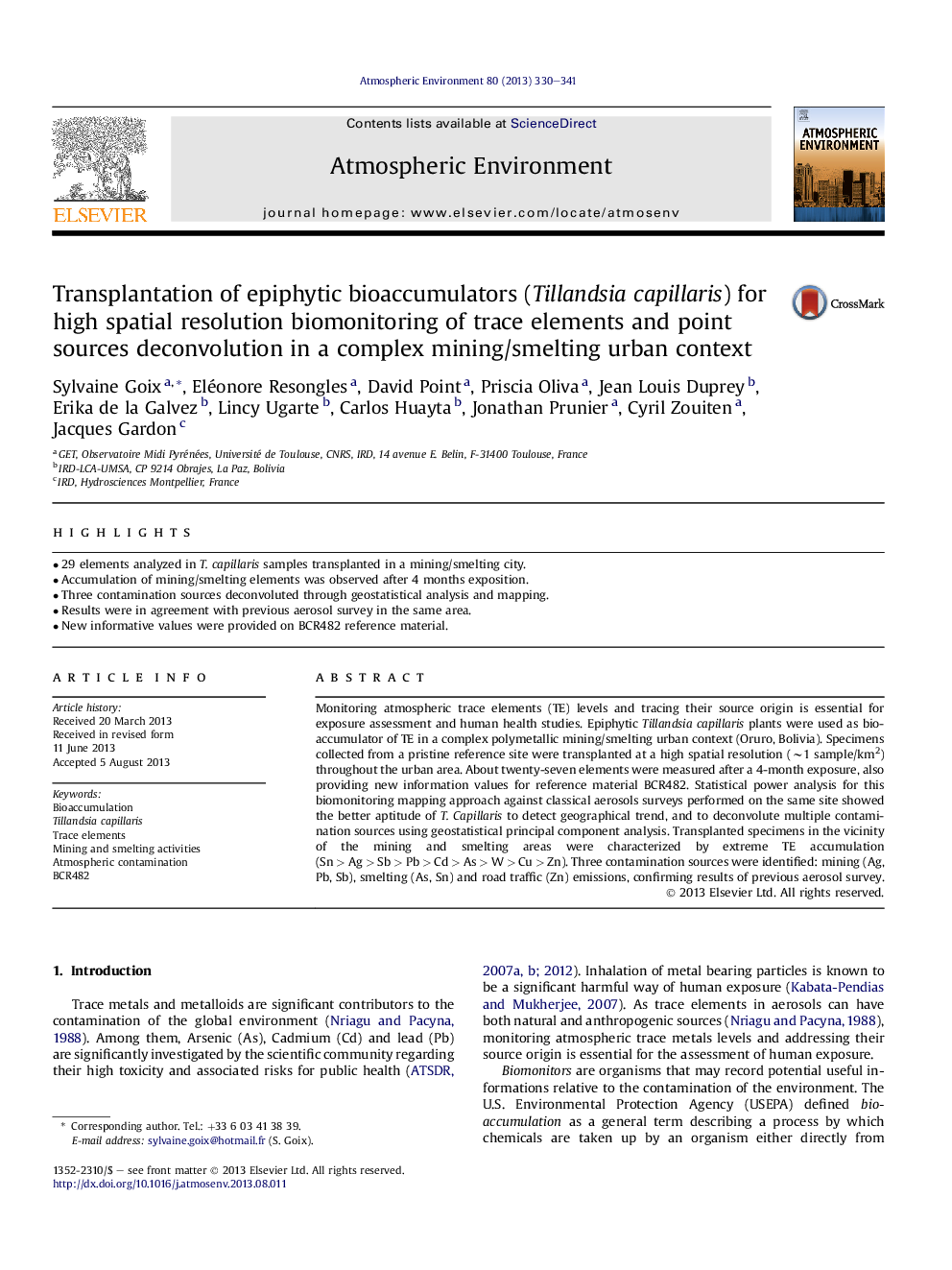| Article ID | Journal | Published Year | Pages | File Type |
|---|---|---|---|---|
| 6340660 | Atmospheric Environment | 2013 | 12 Pages |
Abstract
Monitoring atmospheric trace elements (TE) levels and tracing their source origin is essential for exposure assessment and human health studies. Epiphytic Tillandsia capillaris plants were used as bioaccumulator of TE in a complex polymetallic mining/smelting urban context (Oruro, Bolivia). Specimens collected from a pristine reference site were transplanted at a high spatial resolution (â¼1 sample/km2) throughout the urban area. About twenty-seven elements were measured after a 4-month exposure, also providing new information values for reference material BCR482. Statistical power analysis for this biomonitoring mapping approach against classical aerosols surveys performed on the same site showed the better aptitude of T. Capillaris to detect geographical trend, and to deconvolute multiple contamination sources using geostatistical principal component analysis. Transplanted specimens in the vicinity of the mining and smelting areas were characterized by extreme TE accumulation (Sn > Ag > Sb > Pb > Cd > As > W > Cu > Zn). Three contamination sources were identified: mining (Ag, Pb, Sb), smelting (As, Sn) and road traffic (Zn) emissions, confirming results of previous aerosol survey.
Related Topics
Physical Sciences and Engineering
Earth and Planetary Sciences
Atmospheric Science
Authors
Sylvaine Goix, Eléonore Resongles, David Point, Priscia Oliva, Jean Louis Duprey, Erika de la Galvez, Lincy Ugarte, Carlos Huayta, Jonathan Prunier, Cyril Zouiten, Jacques Gardon,
